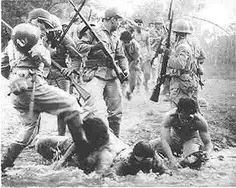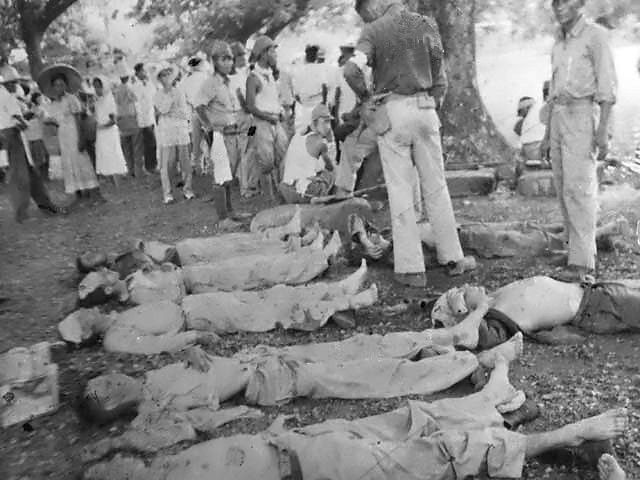The Pantingan River Massacre

The Pantingan River Massacre happened during the Bataan Death March. Hundreds of Filipino soldiers who surrendered to the Imperial Japanese Army, most of whom belonged to the Philippine Commonwealth Army’s 1st, 11th, 71st, and 91st Divisions of the USAFFE were taken to the riverside by the Japanese soldiers were shot, bayoneted or beheaded.
On April 11, 1942, Filipino troops of the 91st Philippine Army Division under Brigadier General Luther Stevens, were separated from their American officers and moved to the Pantingan River near Mariveles.
In his book “Bataan: The March of Death,” Stanley Falk, a historian with the office, chief of Military History, Department of the Army, describes what took place:
“At about noon, a Japanese officer identified as Lt. General Akira Nara, 65th Brigade Commander, arrived by automobile … There is no record of what Nara said during a quick conference with his officers but no sooner had he left, when all Filipino officers and non-commissioned officers in the group, about 350 to 400 men, were lined up along the trail. The Filipino privates were ordered to move on but the rest of the captives were formed into three groups and their wrists tied securely with double-strand telephone wire.
“As the unfortunate men stood with their backs to their captors, a Japanese civilian interpreter began to address them in Tagalog, saying ’My friends, don’t take it so hard. Had you surrendered earlier, you would not have met this tragedy. We are doing this because many of our soldiers died fighting against you.’
“At a given signal, the execution began. Japanese officers moved down the line mercilessly beheading the Filipinos with their sabers. From the other end the Japanese enlisted men methodically plunged their bayonets into the backs of the prisoners. For two hours, the grisly slaughter continued with the Japanese pausing to wipe away the perspiration and then returning to their grim task.”

They did not make it. Dead soldiers in Bataan.
When the slaughter was over, only half a dozen prisoners remained alive, buried beneath their slain comrades. One of those who did survive, was Captain Pedro Felix whodays after the massacre, appeared at his family’s house in Manila suffering from bayonet wounds and shaking with malaria, Felix, a staff officer with the 91st Division, Philippine Army, said he’d been in hiding and on the run since April 12, the day the Japanese massacred hundreds of his comrades at the Pantingan River.”
“The massacre of the Filipino officers and non-coms of the 91st Division was apparently the only mass execution to take place on Bataan.” Whoever was responsible for the slaughter, it was without doubt the worst single atrocity of the war.
Other survivors of the massacre include Lt. Manuel Yan who later became head of the Philippine Army and ambassador to Thailand. Another survivor, Capt. Ricardo Papa, a G-3 Officer of the 91st Division later became a Chief of Police in Manila.
After the War, General Tomoyuki Yamashita, commander of all Japanese forces in the Philippines, General Masaharu Homma, whose troops were responsible for the Death March and General Kou Shiyoku, commandant of the POW camps in the Philippines, were tried by a US Military Commission in Manila, and executed.
Lieutenant General Akira Nara, 65th Brigade commander, was never charged.




